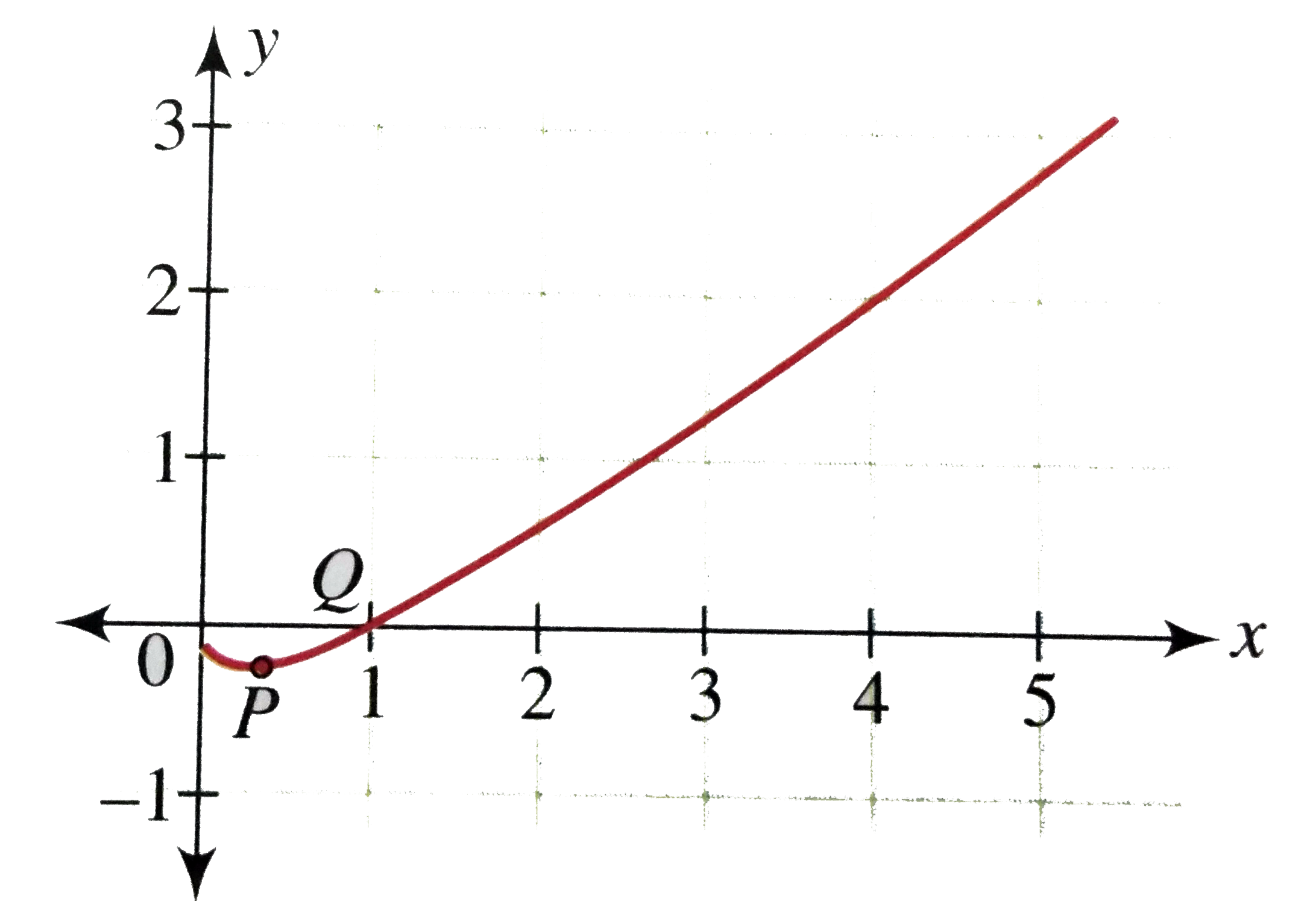Draw the graph of the function f(x)=x−√x.
Video Solution
Text Solution
We have f(x)=x−√x
Clearly, the domain of the function is [0,π)
f(x)=√x(√x−1)
f(x)<0 for x<1 and
f(x)<0 for 0<x<1
Also f(0)=0 and
f(x)=0∴x=0,1
The graph intersects the x-axis at (0,0) and (1,0)
Now, f′(x)=1−12√x=2√x−12√x
f′(x)=0∴x=1/4, which is the point of minima.
f(1/4)=−1/4
Further when x→∞,x−√x→∞
Thus, from point O(0,0) to p(1/4,−1/4),f(x) decreases from 0 to −1/4
From P onwards, f(x) increases, intersecting the x-axis at Q(1,0).
Hence the graph of the function is as shown in the following figure.

|
Updated on:21/07/2023
Topper's Solved these Questions
Similar Questions
Draw the graph of the function f(x)=|x−1|
View SolutionDraw the graph of the function f(x)=xx
View SolutionDraw the graph of the function f(x)=(1x)x
View SolutionDraw the graph of the function f(x)=−x|x|.
View SolutionDraw the graph of the function: f(x)=log|x|
View SolutionDraw the graph of the function: |f(x)|=tanx
View SolutionDraw the graph of the function: |f(x)|=tanx
View SolutionDraw the graph of the function: f(x)=||x−2|−3|
View SolutionDraw the graph of the function: f(x)=||x−2|−3|
View SolutionDraw the graph of the function f(x)=(1+1x)2
View Solution

